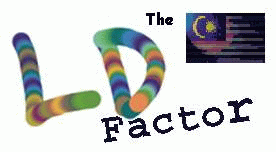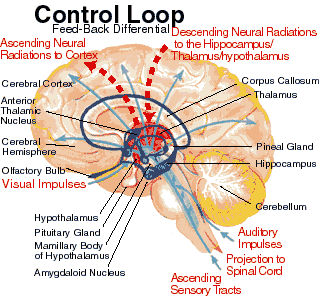 |
| Attention Deficit Disorder | Dylexia | Language Based Learning Disabilities | Delayed Learning Skills | Links | Author | |||||||||
|
1
Learning Disabilities: Attention Deficit Hyperactivity Disorder (ADHD)
What are the signs of AD/HD?
 There are three main
signs, or symptoms,of AD/HD. These are:
There are three main
signs, or symptoms,of AD/HD. These are:
-
problems with paying attention
-
being very active( called hyperactivity), and
-
acting before thinking ( called impulsivity)
More information about these symptoms is listed in a book called the Diagnostic and Statistical Manual of Mental Disorders (DSM), which is published by the American Psychiatric Association (2000). Based upon these symptoms, three types of AD/HD have been found:
-
inatttentive type, where the person can't seem to get focused or stayed focused on a task or activity.
-
hyperactive-impulsive type, where the person is very active and often acts without thinking, and
-
combined type, where the person is inattentive, impulsive, and too active.
-
Inattentive type. Many children with AD/HD have problems paying attention. Children with the in attentive type of AD/HD often:
-
do not pay close attention to details;
-
can't stay focused on play or school work;
-
don't follow through on instructions or finish school work or chores;
-
can't seem to organize task and activites;
-
get distracted easily; and
-
lose things such as toy, school work and books
-
 Hyperactive-impulsive type.
Being too active is probably the most visible sigh of AD/HD. The hyperactive
child is "always on the go." (As he or she gets older, the level of activity may go down.). These children
also act before thinking (called impulsivity). For example, they may
run across the road without looking or climbing to the top of a very
tall tree. They may be surprised to find themselves in a dangerous situation.
They may have no idea of how to get out of the situation.
Hyperactive-impulsive type.
Being too active is probably the most visible sigh of AD/HD. The hyperactive
child is "always on the go." (As he or she gets older, the level of activity may go down.). These children
also act before thinking (called impulsivity). For example, they may
run across the road without looking or climbing to the top of a very
tall tree. They may be surprised to find themselves in a dangerous situation.
They may have no idea of how to get out of the situation.
Hyperactivity and impulsivity tend to go together. Children with hyperactive-impulsive type of AD/HD often may:
-
fidget and squirm;
-
get out of their chairs when they're not supposed to;
-
run around or climd constantly;
-
have trouble playing quietly;
-
talk too much;
-
blur out answers before questions have been completed;
-
have trouble waiting their turn;
-
interrupt others when they're talking, and
-
butt in on the games others are playing
Combined type. Children with the combined type of AD/HD have symptoms of both of the types described above. They have problems with paying attention, with hyperactivity, and with controlling their impulses.
Of course, from time to time, all children are inattentive, impulsive, and too active. With children who have AD/HD, these behaviors are the rule, not the exception.
These behaviors can cause a child to have real problems at home, at school, and with friends. As a result, many children with AD/HD will feel anxious, unsure of themselves, and depressed. These feelings are not symptoms of AD.HD. They come from having problems again and again at home and in school.
-Adapted from the National Information Center for Children and Youth with Disabilities of America